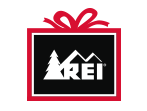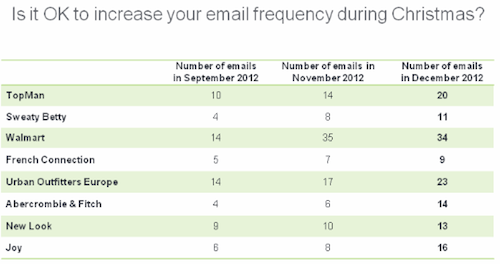Articles and News
15 Tips To Get More Sales From Your Holiday Emails | November 26, 2013 (0 comments)

Merrick, NY—Despite the rocketing popularity of social media among luxury brands, a new study released last month shows email still remains the number-one way to drive purchases, especially among high-earning affluent consumers. But every business wants a share of those wallets, so how can you make your emails stand out—without annoying the customer so much he or she tunes you out?
Lyris, a global digital marketing solutions firm, recently offered a webcast titled “Top Tips To Boost Online Sales This Holiday Season.” Narrated by Bob Kamal, lead digital strategist for Lyris, the session addressed some key points for making the most of the holiday opportunity online, addressing topics such as frequency, boosting customer engagement, better, calls-to-action, minimizing page or cart abandonment, and more. Your holiday frequency goal is to maximize your campaign and minimize unsubscribes. Even if you aren’t e-commerce enabled, these tips will help your email marketing be more effective, period.
Here are 15 tips excerpted from the webinar:
1. The best way to maximize reach and minimize unsubscribes is segment your emails, engaging those customers who are most likely to convert to purchasers and avoiding those who aren’t interested. Adjust your messaging appropriately for each. Lyris suggests this example of how to segment your list is: a) those who are engaged and purchase; b) those who are engaged and not purchasing; c) seasonal purchasers; or d) those who are unengaged and don’t purchase (the segment you don’t need to keep emailing). Editor’s note: “Engaged” in this usage means consumers who engage with your marketing, not being engaged in the bridal sense. Although, for jewelers, customers who are engaged to be married and engaged with your marketing would be a highly valuable segment for your bridal messaging.
2. Be honest with your customers that they will be hearing from you more often during the holiday season. People expect retailers to send more emails during the holidays, so you’re not offending them—but it still doesn’t stop their inboxes from being choked.
3. Give them flexibility to hear from you less. A snooze program will allow them to opt out of some or every email during the holidays, depending on how it’s set up.

A snooze program, such as this button from a Lyris template, allows clients to choose fewer holiday emails without unsubscribing altogether.
4. Are daily emails appropriate? Yes, if you segment correctly so that only those customers who want them see them. Again, offer options such as a snooze button for consumers who want to hear from you a little less frequently.
5. Change the design not only of your emails but all your online templates to reflect a holiday theme. It’s an emotive season; changing your design will reflect the season.


Etailer Zappos and outdoor specialist REI both added a holiday flair to their logo templates for communications throughout the selling season.
6. Add in holiday offers—free shipping, charitable donation, etc.—to triggers like your welcome email (which also reflects the holiday design template).
7. One area of a web page or email that’s most overlooked is the footer. People are actually quite used to scrolling down to the footer to look for categories that aren’t obvious elsewhere; this is a tremendously underutilized piece of real estate and it’s a great area to add holiday information.
8. Make sure you have a call to action in all your holiday emails, whether it’s a reminder about shipping time, free shipping, discounts, charity tie-ins, etc.
9. Look into a program that helps you follow up with browser abandonment. Why has someone been scouring your pages looking at products, then leaves without buying? You have all that data about their behavior and where their eyeballs were; use that information to send a follow-up email about some of the products they were shopping. You can do this step even if you’re not e-commerce enabled; encourage them to come in and see the pieces they were admiring online.
10. Likewise, investigate a program that will help you follow up on cart abandonments. If the customer got so far as to put the item in his or her cart, but never completed the transaction, why? Tie that into your email marketing, “You left something behind?” Add a special offer, such as free shipping or return shipping, to sweeten the pot. Kamal says programs such as this typically convert 40% of customers who initially abandoned their carts.
11. Mobile optimization is critical. Christmas is a very mobile time of year—people are insanely busy and on the go. 41% of all smartphone users have made a purchase on the device; of those, 3% have purchased jewelry. It may not sound like much but the numbers add up!
12. 97% of all emails are opened and viewed once. If they open one that isn’t mobile-friendly, they’re not going to go back and re-open it on their desktop.

This chart from the Lyris webinar shows how a selection of retailers increased their email volume during the fourth quarter.
13. Look into responsive design programs. These help your emails adjust their presentation according to device. A media query sensor in the program will check the size of the screen on the device that opened the email, and render the same email differently by device.
14. Various ways to adapt an email include hiding it (not showing all the categories, only the first few or most popular), stacking it (vertically), or moving the elements around until they’re appropriate for the viewer’s screen.
15. You only get one Christmas per year, says Kamal. Don’t just “set and forget” your email strategies; continuously test to see if they’re the most effective.
These tips are even more applicable to luxury retailers than the general market, says Kamal. “Branding and the customer experience is imperative for a luxury brand, so tweaking the design of their email campaigns to reflect the season presents their customers with a more personal experience for the customer, he told The Centurion.
“Mobile optimization is absolutely critical for all retailers, but considering the market luxury jewelers are operating in, I would say ensuring that emails are designed for high mobile customers is not only best practice, but mission critical,” he continued.

Here is an example of mobile optimization. On the left, a page as it appears on a desktop or laptop. On the right, the elements are stacked to fit a mobile device. Source: Lyris
Intelligent segmentation also is even more important for a high-end retailer who may have a smaller database than larger retailers, Kamal said.
“The value of each record on a database would be quite high, so segmenting based on spend and engagement and communicating to each segment with targeted communications can increase engagement and conversions, but also lead to less subscribers opting out of emails,” he said.
To obtain tools discussed in these tips, such as a “snooze” program that allows users to opt-out on a short-term basis without totally unsubscribing, or a responsive design program that adapts emails to the receiver’s device, retailers will need to work with an email or digital marketing firm—such as Lyris—to develop a program that meets their needs, says Kamal.







